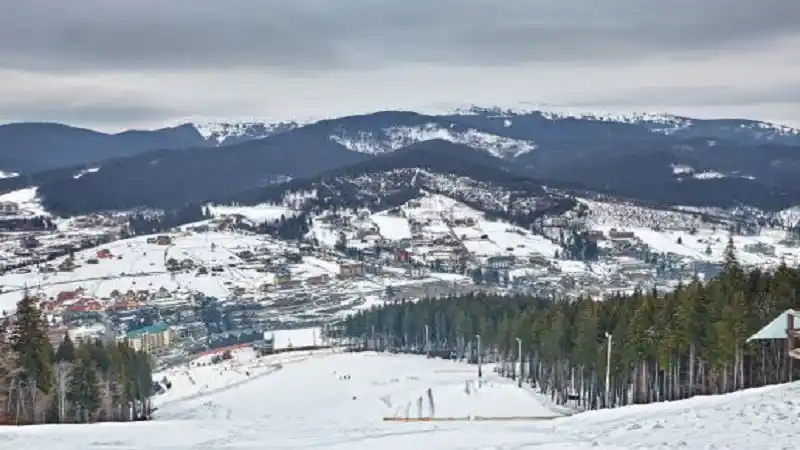
As fall begins to fade and the colorful leaves give way to the frosty white coverings of winter, you need to start thinking about pre-winter maintenance. Winter brings harsh conditions that can cause various problems if your home isn’t properly prepared. By addressing potential issues early, you can avoid unexpected repairs, stay safe, and ensure your home remains cozy throughout the season.
This checklist will guide you through the essential tasks to complete before winter arrives so that your home is ready to handle the cold.
Inspect and Clean Gutters
One of the most important tasks before winter is cleaning out your gutters. Fall leaves and debris can easily clog them, and when snow melts, it can lead to water overflow. This overflow can seep into the roof and walls, causing costly water damage. Moreover, clogged gutters contribute to ice dams, which are barriers of ice that prevent proper drainage. Inspect your gutters for signs of wear, and make sure downspouts direct water at least five feet away from your home. Regularly clearing out the gutters and ensuring they’re functioning properly can help avoid these problems as winter sets in.
Check Your Pipes and Plumbing
Cold temperatures can cause your pipes to freeze and potentially burst, leading to flooding and expensive repairs. A vital part of your pre-winter checklist, therefore, is ensuring your pipes and plumbing are in good shape. Start by inspecting all exposed pipes, especially in unheated areas like basements and attics. Look for any signs of leaks or wear and insulate them if necessary. You should also address issues like yellow hot water, which can be caused by rust or mineral buildup in your plumbing.
Hiring expert plumbers who know how to fix yellow hot water and other common issues is essential to prevent a winter disaster.
Service Your Heating System
We rely on our heating systems for comfort during winter. So, before the cold arrives, it’s important to have it professionally serviced. A technician will check for any potential issues, clean and replace filters, and ensure the system is running efficiently. Regular maintenance will reduce the chances of a breakdown when you need heat the most while also keeping your energy bills in check. It is also wise to check the thermostat to make sure it’s functioning correctly and consider upgrading to a smart thermostat for more control over your home’s temperature.
Seal Windows and Doors
Drafty windows and doors are common culprits of heat loss during winter. Sealing them properly can make a huge difference in maintaining the warmth of your home and improving energy efficiency. Start by checking for gaps or cracks around your windows and doors. Weatherstripping, caulking, or foam tape can help seal these openings, preventing cold air from entering and warm air from escaping. Consider upgrading to double-glazed windows if your budget allows, as they provide better insulation. By addressing these drafts early, you’ll save on heating costs and ensure your home stays cozy throughout the colder months.
Inspect the Roof and Chimney
The roof is your home’s first line of defense against winter weather. Snow, ice, and strong winds can take a toll on your roof, so inspecting it before winter is essential. Look for any damaged or missing shingles that need replacement, as well as any cracks in the flashing around chimneys and vents. Addressing these issues early can prevent leaks and further damage from snow buildup. If you have a chimney, it’s equally important to have it inspected and cleaned. Creosote buildup can lead to chimney fires, so hiring a professional to clean the chimney ensures your fireplace is safe for use.
Test Smoke and Carbon Monoxide Detectors
Winter naturally means there will be an increased use of heating systems, fireplaces, and other heat sources that can raise the risk of fire or carbon monoxide poisoning. That’s why it’s critical to check that your smoke and carbon monoxide detectors are functioning properly before the cold season arrives.
Test each device by pressing the test button and replacing the batteries if necessary. If your detectors are older than ten years, consider replacing them entirely with newer models that are more reliable. It’s also a good idea to install extra detectors near bedrooms or in areas where people spend a lot of time during the day.
Reverse Ceiling Fans
Many people think ceiling fans are only useful during the summer. Well, that’s not true. Ceiling fans can be used during winter to warm up your home. All you need to do is turn on the reverse switch that changes the direction of the blades. In winter, set the fan to rotate clockwise at a low speed. This helps push warm air, which naturally rises back down into the room, improving overall heat circulation.
By reversing your ceiling fans, you can reduce the strain on your heating system, making it easier to maintain a consistent temperature throughout your home. This simple step can also help lower your energy bills while keeping your home more comfortable. So, you’ve got nothing to lose!
Insulate Your Attic
Proper attic insulation is key to maintaining a warm and energy-efficient home in the winter. An inadequately insulated attic allows heat to escape, forcing your heating system to work harder and increasing your energy costs. Additionally, a poorly insulated attic can contribute to the formation of ice dams on your roof, which can lead to leaks and damage.
Check the current level of insulation in your attic. If it’s below the recommended thickness, consider adding more insulation, such as fiberglass or spray foam. Make sure that any gaps or openings in the attic are sealed, as even small gaps can allow warm air to escape. Proper insulation keeps your home warmer, lowers your energy consumption, and protects your roof from winter-related issues.
Prepare Outdoor Spaces
Before winter fully sets in, make sure to take care of your outdoor spaces. Start by draining and storing garden hoses to prevent freezing and cracking. Turn off outdoor faucets and shut off water lines leading to outdoor spigots to prevent burst pipes.
It’s also a good idea to store outdoor furniture, grills, and lawn equipment in a sheltered space, such as a garage or shed, to protect them from the elements. If you don’t have the space, cover them with weatherproof covers to protect against snow and ice. Finally, trim any tree branches that hang close to your home, as heavy snow or ice can cause them to break and potentially damage your property.
Let it Snow!
Preparing your home for winter involves a range of essential tasks that protect your property and ensure comfort throughout the colder months. By focusing on these key areas, you’ll minimize the risk of costly repairs and create a safe, warm, and energy-efficient home. Taking the time to perform these tasks now will allow you to enjoy the winter season worry-free, knowing your home is well-prepared for whatever winter brings.








